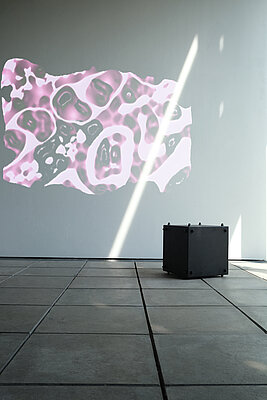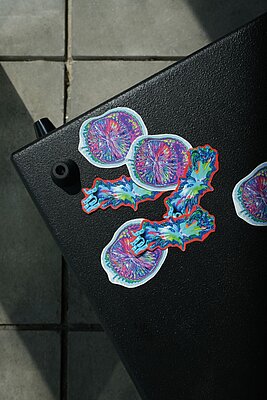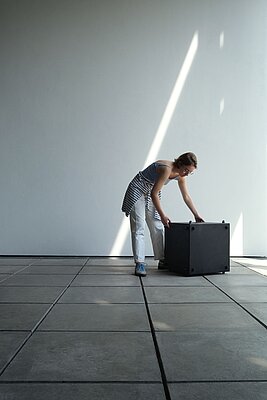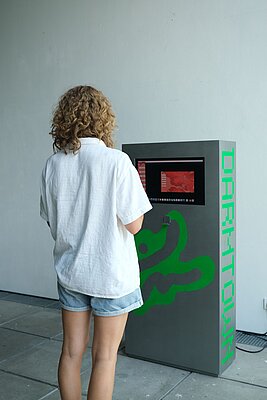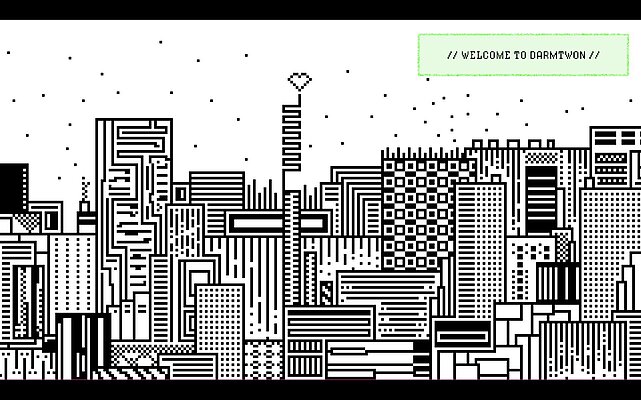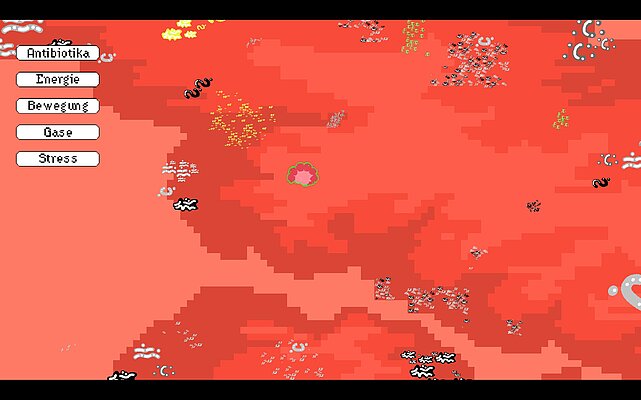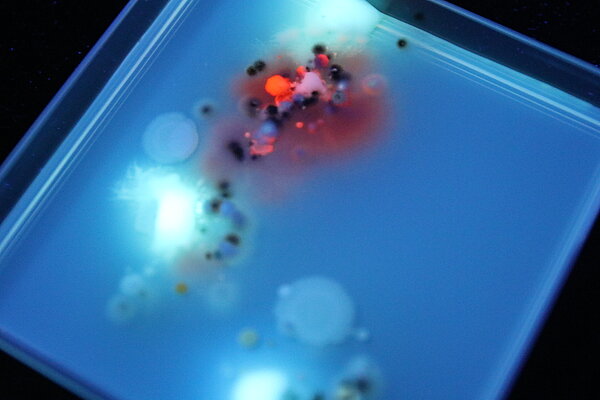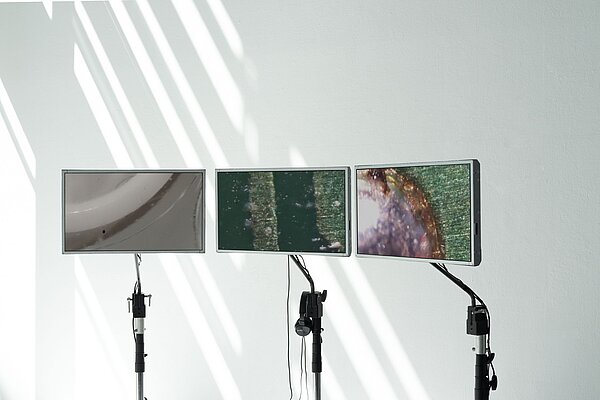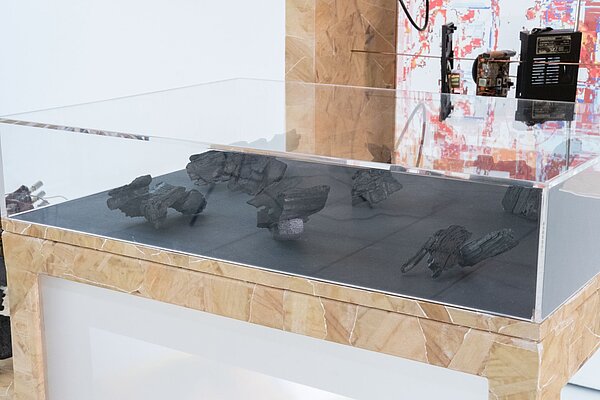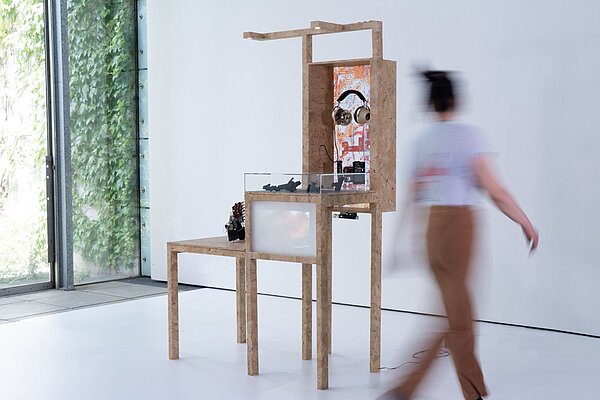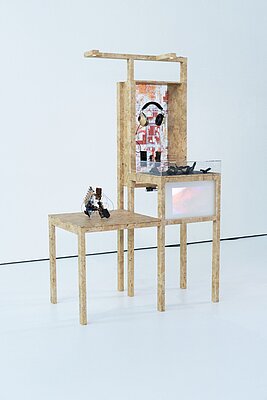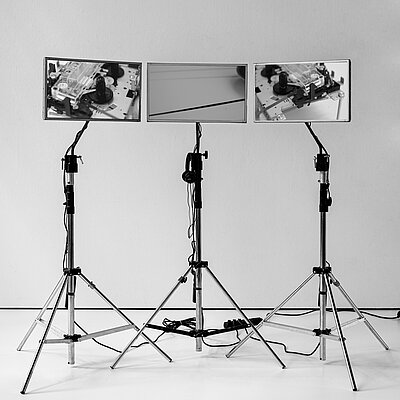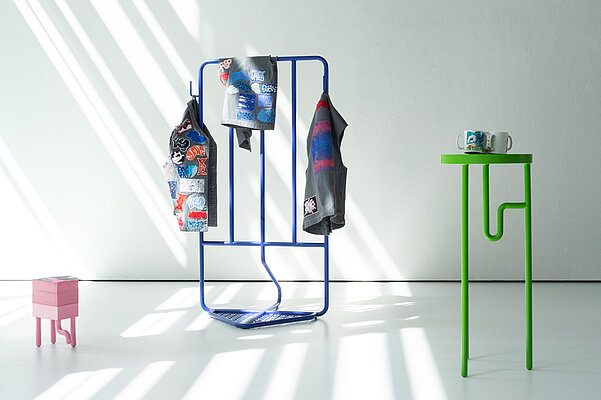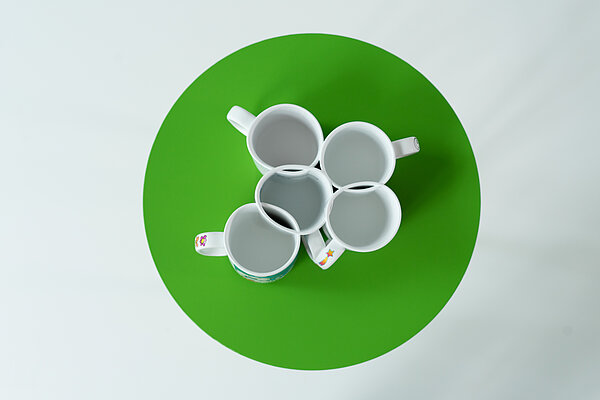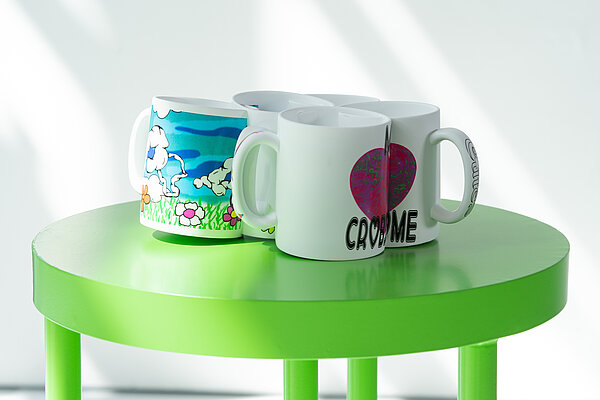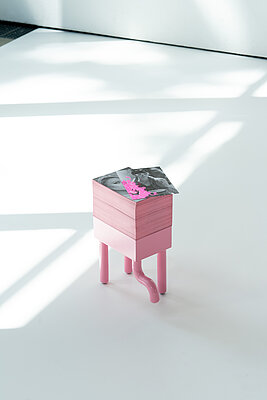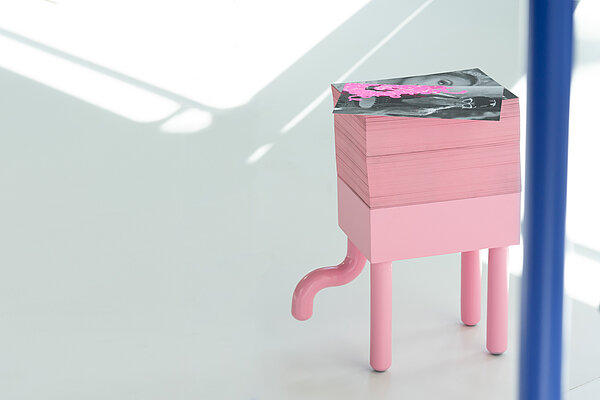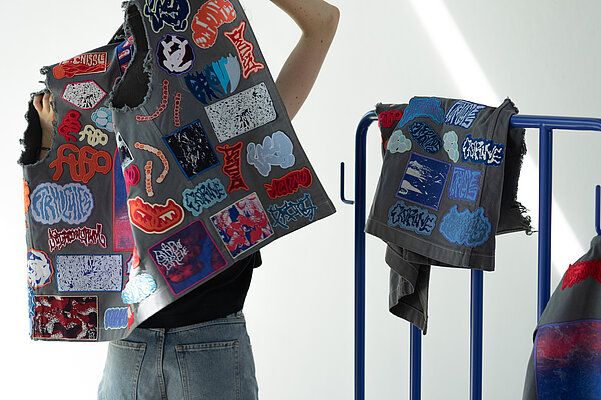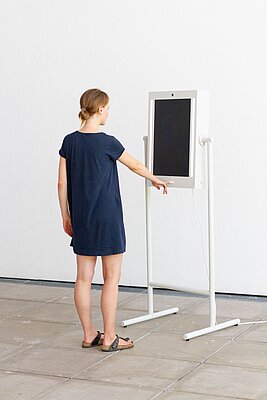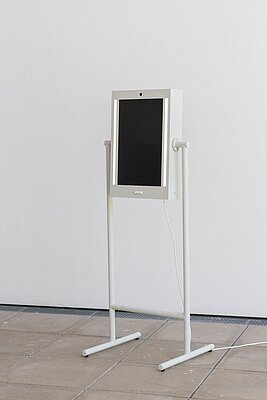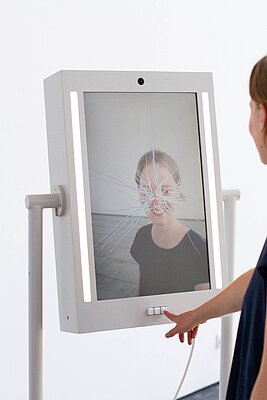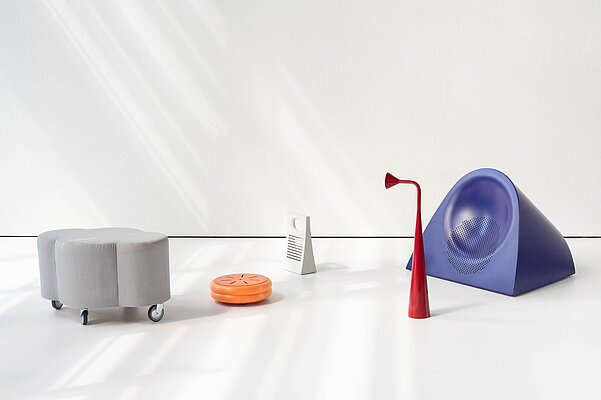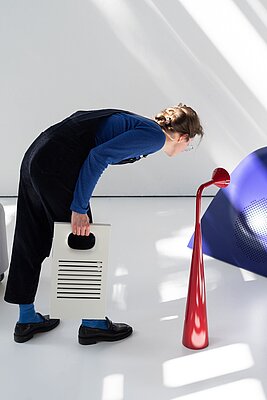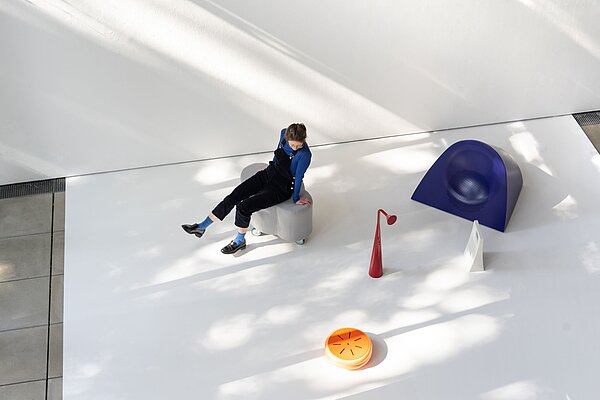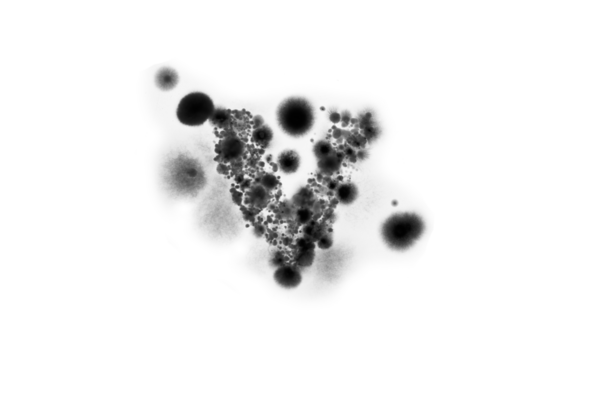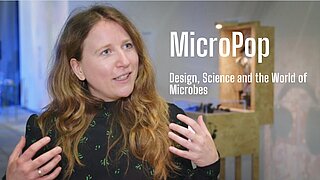MicroPop – Design, Science and the World of Microbes
The exhibition “MicroPop - Design, Science and the World of Microbes” shows exhibits that reflect the invisible world of microbes in an artistic way and make it tangible. It invites us to reflect on our relationship with these small living creatures and allows us to explore new perspectives and approaches that arise when science and design come together.
The Idea of the Project
About 40 to 100 trillion microorganisms live on and in every human body. Together, all these bacteria, viruses, fungi and other microbes make up our individual microbiomes. Today, research into how exactly they interact and how their complex micro biotical balance works is more important than ever: a better understanding of the microbiome can help us, for instance, to get a better grip on known and emerging infectious diseases. This is crucial, especially in light of increasing antibiotic resistances around the world.
The exhibits are the result of a collaboration launched in November 2021 between the University of Tübingen's Cluster of Excellence "Controlling Microbes to Fight Infections" (CMFI), the Stuttgart Academy of Fine Arts (ABK), and the Tübingen Research Center for Science Communication. This page presents a first look at our results.
Exhibition Dates and Venues

November 28, 2025 – April, 12 2026
Vernissage: November 27, 2025 at 7 p.m
Winzige Giganten: Die Macht der Mikroorganismen
Monday 10:00 – 15:00
Tuesday 10:00 – 17:00
Wednesday 10:00 – 19:00
Thu – Sun 10:00 – 17:00
Museum Brot und Kunst – Forum Welternährung
Salzstadelgasse 10
D-89073 Ulm

June 29 – August 27, 2023
Wed – Sun | 10 a.m. – 5 p.m.
Thu | 10 a.m. – 7 p.m.
Museum der Universität Tübingen (MUT) | Ancient Cultures | Hohentübingen Castle
Burgsteige 11, D - 72070 Tübingen

May 6 – June 15, 2023
Thu – Sun | 2 – 8 p.m.
SpeicherART at DER SPEICHER GRAMZOW
Am Bahnhof 5, D - 17291 Gramzow/Uckermark

April 24 – 28, 2023
Tue – Fri | 12 p.m. – 7 p.m.
Stuttgart State Academy of Art and Design
Neubau 2, Foyer
Am Weißenhof 1
D-70191 Stuttgart
The Teams and their Exhibits
In the course of this project, doctoral students from the Cluster of Excellence CMFI and students from the programs of Industrial and Communication Design at the Stuttgart State Academy of Art and Design (ABK) have been working together in transdisciplinary teams – combining cutting-edge research and innovative art. These teams developed eight exhibits that focus on a wide variety of aspects of microbiome research. Working together, we follow the common goal of exploring fresh perspectives and innovative possibilities that arise when science and art work closely together to communicate research – and make the invisible visible to the public.
The doctoral students participating in the project come from the fields of microbiome research, such as infection biology, immunology, bioinformatics, pharmaceutical biology, antibiotic research, microbiology, and biotechnology. The ABK classes work with a variety of approaches to industrial and communication design. Their methods and materials are multi-faceted, ranging from augmented reality, digital pieces, and 3D printing to bronze casting, woodwork, and type design.
The exhibits play freely with various research concepts and objects. They are strongly interactive and confront visitors of the exhibition with what is otherwise inaccessible to the human senses.
Leadership Team
‘The Popular Microbiome’ addresses the field of science communication and knowledge transfer – and is based on a project idea by Dr. Davina Höll, who explores the historical and epistemological contexts as well as the ethical consequences of microbiome research within the Cluster of Excellence CMFI. In addition, Leon Kokkoliadis, the cluster’s public relations manager, and Michael Pelzer, who is responsible for the excellence strategy’s project area of ‘Knowledge Design’ at the Department of General Rhetoric, are part of the leadership team. On the Stuttgart side, the leadership team is completed by Prof. Uwe Fischer, David Gebka (Industrial Design) and Prof. Dr. hc. Patrick Thomas (Communication Design). The interdisciplinary cooperation process is accompanied and documented by Berlin based multimedia specialist and artistic researcher Johanna Barnbeck.
1. Augmented Mirror
Augmented reality via phone simulation.
The daily look in the mirror has a decisive visual impact on our self-perception: we perceive ourselves as individuals within our skin. Although we tolerate bacteria inside of us (because
of their useful effects) the idea of invisible, small creatures in and on our body, causes an aversion and the urge to get rid of the cohabitants.
From a current scientific perspective, however, a completely different picture emerges: our body is a symbiotic complex of ecosystems in which human and micro-organic units interact inseparably.
On this basis the ‘Augmented Mirror’ project proposes a new human identity, making the invisible tangible, approachable and letting visitors immerse themselves in the colorful and diverse microcosmos. In a virtual mirror they see themselves in an unusual way: as part of an omnipresent, fascinating but so far unnoticed world.
2. Shotgun Sequencing
Objects in the making.
This exhibit is an attempt to transfer the elaborate process of a laboratory technique, namely shotgun sequencing, to the fields of art and design. Shotgun sequencing, in simplified terms, is a technique for determining the DNA sequence of a genome that is fundamental to genetic studies of all types of organisms, from bacteria to humans. In this method, a genome is randomly broken into fragments, as if hit by a volley of shotgun blasts. The fragments are sequenced individually before a computer is used to assemble the now known DNA sequences in the correct order.
Abstract works, digital fine prints and videos show the destructive process of shotgun sequencing. Exhibit parts may be scattered, layered, or reconstructed from debris, yet still tell their story of beauty that is often hidden behind what at first glance appears to be a bland or boring exterior.
3. Meet and Greet
Take control of the microbial interaction.
Together with our bodies, microorganisms form a complex ecosystem that is essential for our health.
It consists of communities of thousands of species that coexist in mutual cooperation and competition. To compete against each other, they produce substances that we know as antibiotics, for example. The discovery of these antimicrobial agents triggered a medical revolution about 100 years ago. Today we face new problems: Careless or unnecessary use of antibiotics is leading to a rapid increase in antibiotic resistance worldwide.
The researchers see an important approach to solving the problem in the microorganisms themselves: Bacterial communities have a high capacity for self-regulation and control of pathogenic, disease-causing species.
The interactive sound installation "Meet and Greet" shows objects that respond to each other's approach with individual acoustic signals
and thus mirror and recontextualize the complex biochemical processes.
4. The Biofilm
Experience the biofilm through light and sound.
Biofilms are communities of mixed populations of microorganisms that organize and protect themselves from the outside world in a thin slimy membrane. These biofilms can be found anywhere and colonize any surface. This means that we also encounter biofilms in our everyday lives and yet rarely notice them as such. That's why the exhibit makes biofilms visually tangible for visitors, highlighting their diverse presence in our world: biofilm grows on walls, on plants and on people. It grows on all surfaces, without boundaries, again and again, and in different patterns.
5. DarmTown
What happens in our intestine? How does our microbial household affect our health and well-being?
These are questions we have asked ourselves. We have set ourselves the task of bringing this accumulated knowledge closer to other people. A game gives us the opportunity to impart knowledge to young and old, in a way that is fun for them. This is how the game ‘DarmTown’ came into being.
The aim of this game is to bring the imaginary intestinal microbiome into a balanced state. As in real life, our body and especially our intestine is exposed to different influences. It reacts to stress, the food we eat, viruses and bacteria, as well as to exercise, medication and works closely with our immune system. Face these challenges and learn what is good for your gut and you!
6. Resistance Cassette
An audio visual experience of the horizontal gene transfer (HGT).
HGT is one of the most important mechanisms for the evolution and spread of resistance in bacteria. Through a series of mobile elements called resistance cassettes, DNA snippets are passed on even to phylogenetically very distant species.
“Resistance Cassette” literalizes the term cassette and deals with this special form of communication on an auditory level. Ring-shaped information carriers are sequenced, encoded and replicated. Moving through space, information is transmitted and received. It is integrated and then exchanged again. In a state of flux. Simply a constant transfer of information in the horizontal, which networks organisms and expands their capabilities
7. Bacterial Typography
A typeface generated and evolved with bacteria.
“Bacterial Typography” is an experimental typographic project aiming for an abstract interpretation of letters through
bacteria. What is the outcome of combining typography, a system used by humans for centuries, with the microbiome?
During our research we discovered new ways of creating typography by transferring samples of bacterial cultures, in the shape of different letters, onto petri dishes. We made use of bacteria sourced from random plant leaves. In parallel we worked with bacteria that glow in the dark. The different results show the randomness of bacterial growth. Some bacteria grew exactly in the typographic shape that we created, whilst others became contaminated, which led to illegibility.
8. Shaking Flagella
Everyday objects as analogies for the human-microbiome relationship.
We humans are constantly in intimate exchange with microbial organisms that are imperceptible to the naked eye. In the course of microbiome research it
is becoming increasingly apparent that without these encounters and collaborations at the cellular and molecular level, we are not viable. Together with microorganisms, we form a fluidly networked, cooperatively productive system that takes care of diverse regulatory and metabolic processes. Physical purity and seclusion are therefore not an option. The supposedly sharp boundaries between humans and their inner and outer environment rather seem to be blurring on a microbial level and the delimited individual cannot be found there.
Human beings are more than they are commonly assumed to be. What kind of relationship do they have to this vibrant microcosm? Are we to be seen as a “superorganism” of human and microbiota?
Pop-cultural references as well as everyday objects function as analogies to discover this complex dynamic relationship from different perspectives.

During the vernissage of “MicroPop - Design, Science and the World of Microbes“ at SPEICHER GRAMZOW and at the Museum of the University of Tübingen MUT, guests had the opportunity to take samples from surfaces to make invisible things from our everyday life visible.
Dr. Davina Höll
Principal Investigator (Young Investigator Grant)
Cluster of Excellence “Controlling Microbes to Fight Infections” (CMFI)
Assistant Professor, Obama Institute for Transnational American Studies
Johannes Gutenberg-Universität Mainz
Jakob-Welder-Weg 20 (Philo II, Raum 02.204)
DE - 55128 Mainz
Tel: +49-6131-39-30399
Email: hoell @
@ uni-mainz.
uni-mainz. de
de
Leon Kokkoliadis
PR Manager
Cluster of Excellence CMFI
Tel: +49 7071 29-74707
E-Mail: leon.kokkoliadis@uni-tuebingen.de

